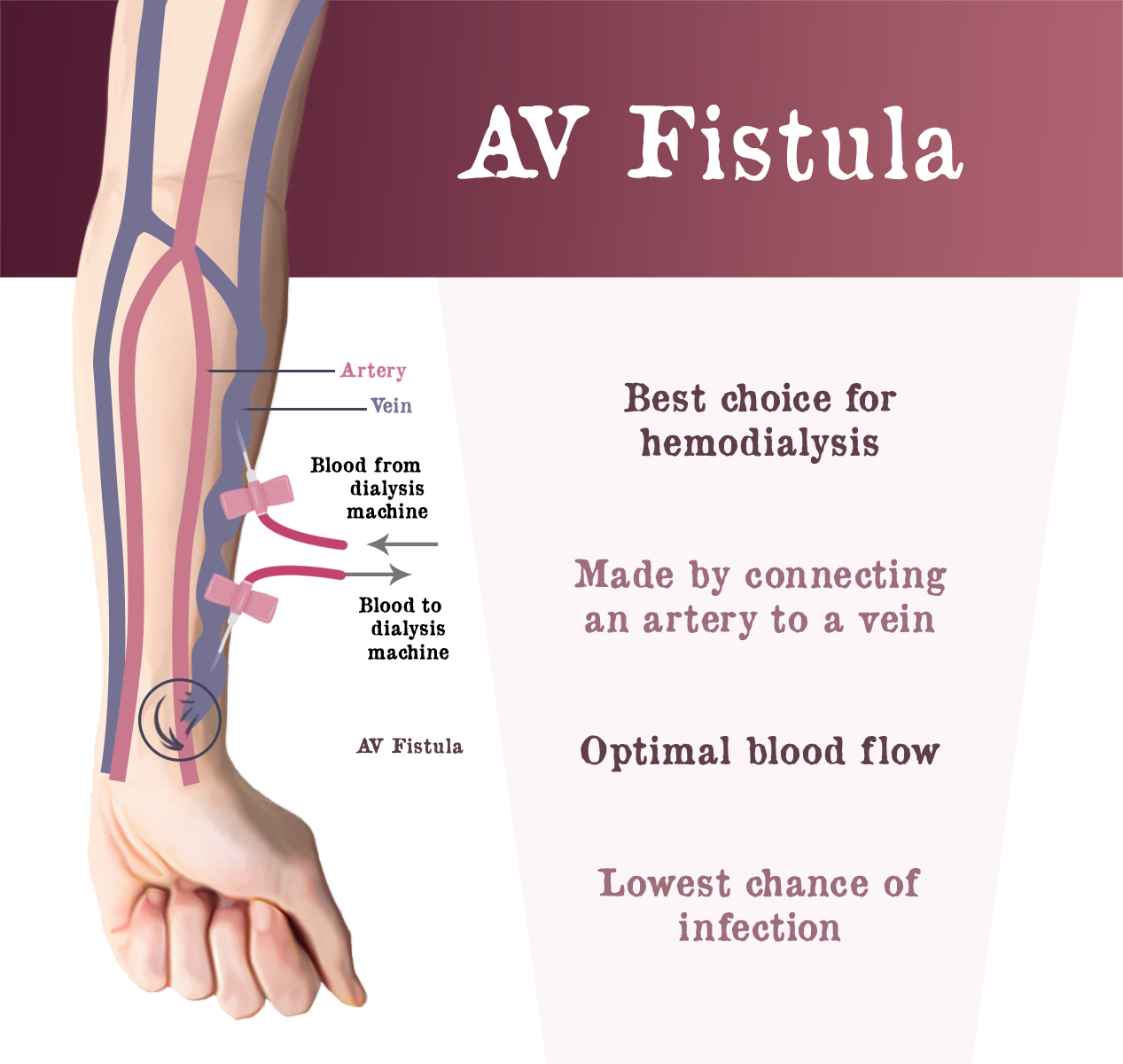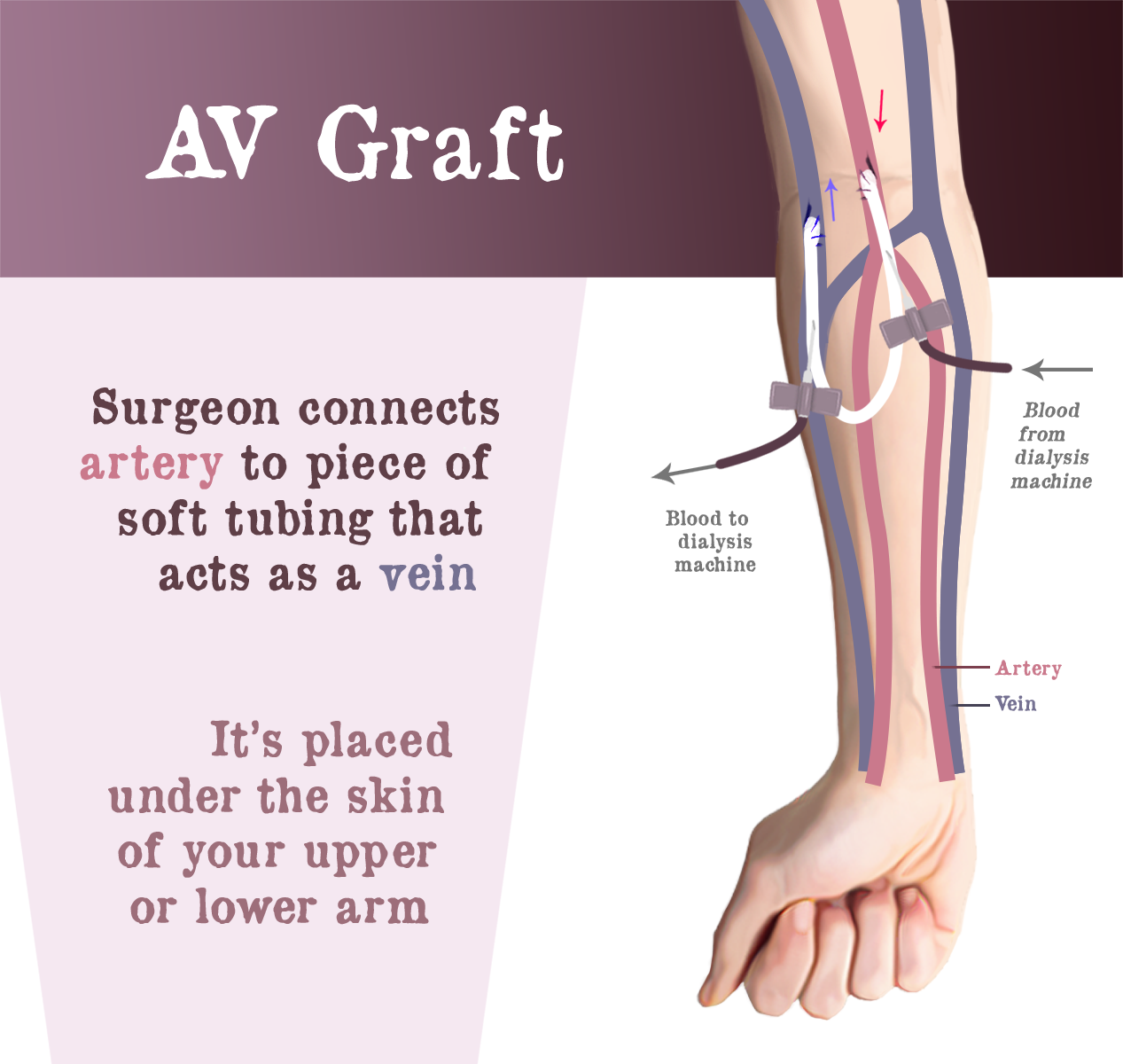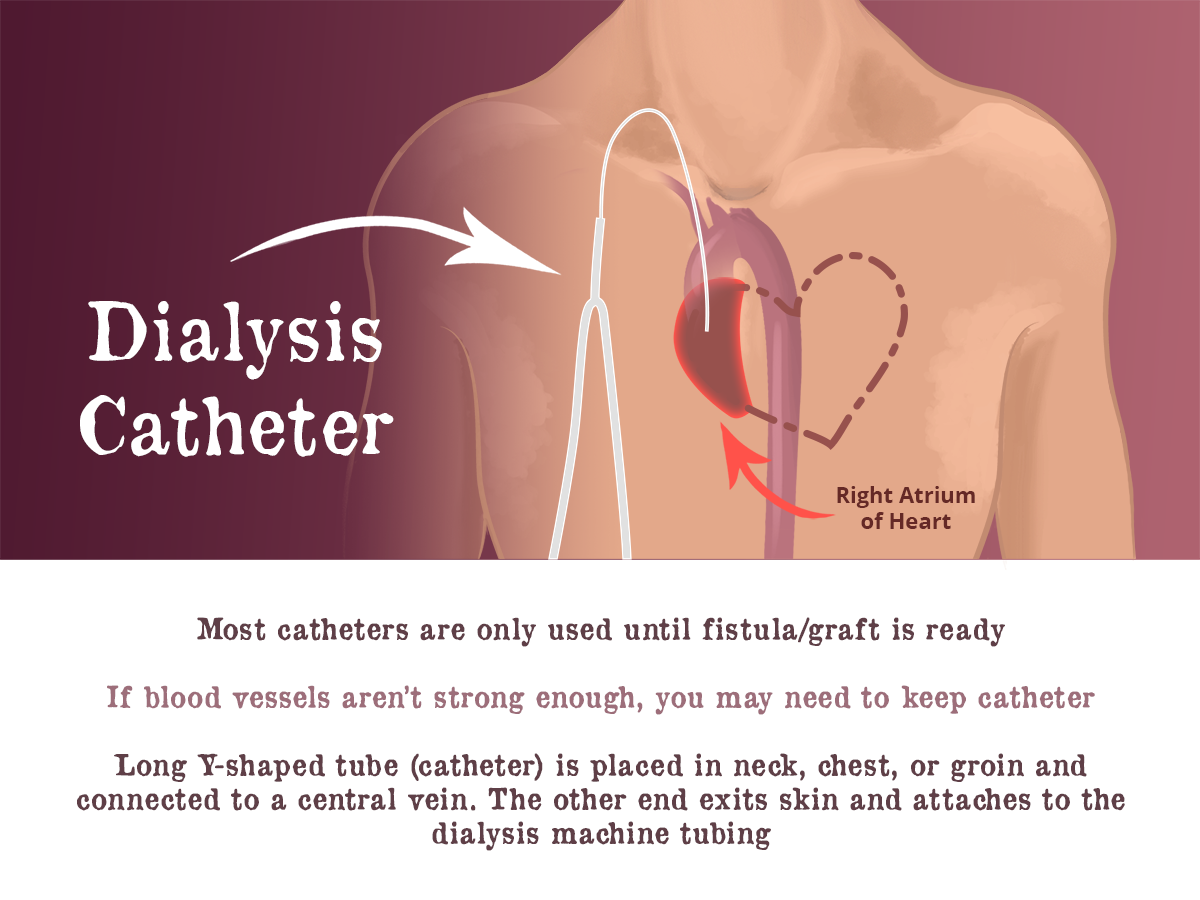The bloodstream needs to be accessed for hemodialysis
Reliable access to your bloodstream is the cornerstone of dialysis therapy. Removing and replacing blood is a delicate process, so your dialysis access is your lifeline. Depending on your health and the strength of your veins, you and your vascular surgeon can decide which type (fistula, graft, or catheter) is best for you. There are 3 types of access for hemodialysis:
Arterio-Venous Fistula (AVF)
Surgically Join Artery + Vein in Arm
AVF stands for Arterio-Venous Fistula. This is an access made by joining an artery and vein in your arm. Doctors most often recommend a minor surgical procedure called arteriovenous (AV) fistula. All of a patient’s blood is withdrawn from an artery or vein, filtered and returned to a vein. Creating an AV fistula allows arterial pressure to enlarge the vein, over time, better enabling it to receive the volume of blood coming back into the body.
- Optimal blood flow
- Lowest infection risk, less chance of clotting
- Surgeon connects arteries to a vein under the skin of upper/lower arm
- Only Con: 2-3 month healing time before usable
Arterio-venous Graft (AVG)
Soft Tube Joins Artery + Vein in Arm
AVG stands for Arterio-Venous Graft. This access to your bloodstream is made by using a piece of soft tube to join an artery and vein in your arm.
- Blood clots (thrombosis) form easier than AVF, especially if your BP drops
- Graft is a ‘foreign body’ so it presents higher infection risk
Temporary Option: Catheter
Soft Tube Placed in Large Vein
Catheters can be used as temporary options for hemodialysis access. This soft tube is placed in a large vein, usually in the neck.
- Slower blood flow
- Highest infection risk
- Y-shaped tube placed in neck/chest/groin, connected to central vein, and exits through skin
- Can be used immediately
- Temporary
- Used when blood vessels are not strong enough
Comparing Access Options
Fistula (AVF)
- Optimal blood flow
- Low infection risk
- Surgeon connects arteries to a vein under the skin on upper/lower arm
- 2-3 month healing time
- Nurse places two needles into fistula: (1) takes blood from artery, (2) blood back to vein
Graft (AVG)
- Second best choice
- Clots easier than fistula
- More prone to infection because tube is a foreign body
- Slightly less healing time
- Same process as fistula, but instead of vein, uses soft tubing inserted under the skin by surgeon
Catheter
- Slower blood flow
- High infection risk
- Can be used immediately
- Mostly temporary
- Used when blood vessels are not strong enough
- Y-shaped tube placed in neck/chest/groin, connected to central vein, exits through skin
What to Expect During Treatment
If your access is a fistula or graft, your nurse or technician will place two needles into the access at the beginning of each treatment. These needles are connected to soft tubes that run into the dialysis machine. Once your access is set up with the dialyzer, your blood:
- Travels to the machine through the first tube
- Gets cleaned in the dialyzer
- Returns to you through the other tube
If your access is a catheter, it can be connected directly to the dialysis tubes without the use of needles.
Don’t worry if this all seems overwhelming at first. Whichever access you have, your dialysis team will teach you how to take good care of it!
How does one take care of a new fistula/graft?
- Wash your fistula/graft with soap daily! That means EVERY DAY!
- Feel the pulse or vibration daily (if missing call doctor)
- No IV lines on that arm
- Don’t sleep on it
- Don’t use that arm for BP
- Don’t let anyone other than your DIALYSIS NURSE use it to draw blood
- Try not to injure that arm
- No scratching
- No jewelry/tight clothes over it
What to look out for:
Complications of higher a graft or fistula may include: blood clots, infection, aneurysm, local bleeding and dialysis associated steel syndrome. Steel syndrome is when there is reduced blood flow to the neighboring tissue because the flow is directed to your graft or fistula. For example, an AVF in the wrist can compromise blood flow to fingers. Findings can be numbness, color change, and diminished pulse.
Call your Doctor IMMEDIATELY if…
- You don’t feel a vibration (25% of hospital admissions in the dialysis population are related to their access)
- Your skin is red
- You notice any discharge or pus
- Anything about the access concerns you





